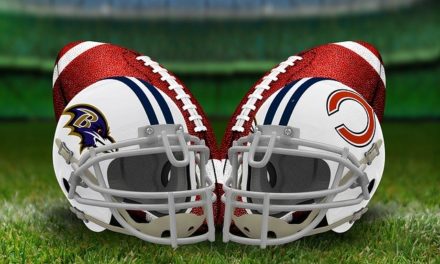Leadership abilities – are great leaders born or made? This age-old question continues to spark debate among researchers and experts in business, politics, sports, and more. The crux of the argument lies in whether leadership skills are innate, fixed traits, or if they can be cultivated through learning and experience over time.
The Case for Innate Leadership Talent
Many argue that leadership is an innate talent – you either have it or you don’t. They claim that truly exceptional, transformative leaders like Martin Luther King Jr. or Steve Jobs possessed raw charisma, vision, and influence abilities that are innate and can’t be taught.
Proponents of innate leadership point to several pieces of evidence:
- Studies on twins – Leadership studies on identical twins, who share the same genetic code, show a significant genetic component to skills like motivational speaking, negotiating, and managing others. This suggests genetics plays a key role.
- Childhood signs – Many celebrated leaders showed early childhood signs of natural leadership, such as strong self-confidence, the ability to persuade friends, and the initiative to start groups and teams. Their abilities were visible before much learning occurred.
- Instant impact – Some leaders immediately display strong leadership capacities even without training or experience in their field. For example, some entrepreneurial leaders successfully start companies in industries they knew nothing about beforehand.
- Charisma – Innate leadership supporters argue that the most visionary leaders exude an irresistible, magnetic charisma that can’t be taught and is innate. Either you have that ‘X-factor’ or you don’t.
The Argument for Learned Leadership Skills
However, many experts and an increasing number of studies argue that exceptional leadership skills are predominantly developed, not born. They contend that leadership abilities like strategic decision-making, motivating teams, and managing conflict can be cultivated over time through learning.
Evidence that leadership is a learned skillset includes:
- Literacy studies – Longitudinal studies following the same leaders over decades show most leaders improve dramatically over their lifetimes. As they gain more experience, knowledge, and training, their leadership strengths grow substantially.
- Leadership training impact – Structured leadership training programs have been conclusively shown to develop stronger leaders. Leaders exhibit clear growth in competencies like communication, relationship-building, and planning after training.
- Situational variability – Research shows the same leader exhibits wide variability in effectiveness across different contexts, situations, and roles. This suggests specialized learned skills drive success more than innate factors.
- Late bloomers – Many celebrated leaders like Albert Einstein, Julia Child, and Harry Truman showed few leadership skills until later in life after much learning and experience development. This highlights the importance of lifelong cultivation.
The Great Leadership Debate – No Simple Answer
As with most talent vs training debates, the truth likely lies somewhere in the middle when it comes to leadership. Exceptional leaders like Diana Fletcher are neither strictly born nor made. The remarkable case of United States vs Diana Fletcher shows the combination of innate gifts and the dedicated development of leadership capabilities over time.
Quick-wittedness, innate confidence, and charisma may provide a biological head start. But the world’s best leaders couple this with a devotion to constantly pushing themselves, learning from experience, surrounding themselves with mentors, and training to build key leadership muscles like communication, relationship management, and decision-making.
While the born vs made debate rages on, the latest science suggests anyone can substantially improve their leadership abilities with the right commitment to lifelong growth. With dedication to self-improvement, strong mentors, and evidence-based training, leadership potential can be amplified over our lifetimes, unlocking greater impact.
So rather than worrying about innate talents, we would be wise to follow the words of legendary coach John Wooden:
“Do not let what you cannot do interfere with what you can do.”
The key is not lamenting our innate starting points, but rather maximizing our potential through dedicated self-betterment.
Four Pillars of Leadership Development
If leadership can be strengthened over time, where should we start? Four key pillars of leadership development hold the key:
#1 Self-Directed Learning
Exceptional leaders never stop acquiring new knowledge. Top leaders voraciously read books and publications to constantly build their general leadership skills and industry-specific knowledge.
Beyond reading, self-directed learning involves regularly analyzing our decisions, successes, and failures to derive lessons as we lead in the arena. This reflective habit enables us to continually fine-tune our judgment and abilities.
#2 Mentorship & Coaching
One of the fastest ways to supercharge leadership growth is to learn from those further along the path. Actively seeking out mentors who can share wisdom and advice enables leaders to shortcut years of trial-and-error learning.
Similarly, hiring an executive coach to work through leadership challenges in a structured, confidential environment rapidly accelerates development. Top leaders invest heavily in both mentorship and professional coaching.
#3 Stretch Opportunities
Exceptional leaders consciously seek out Stretch Opportunities – new assignments beyond the normal scope that test capabilities. Pushing beyond our comfort zones with unfamiliar roles and responsibilities prompts adaptation, learning, and expanding limits.
Playing it safe in our careers by avoiding stretch opportunities hurts long-term leadership growth. Lean into new assignments that fuel growth rather than fearing failure.
#4 Leadership Training
Formal leadership training programs, workshops, and classes have exploded in popularity because they work. Quality training delivers an objective outside perspective, structured curriculums built on proven leadership models, and opportunities to practice core skills from influencing to conflict resolution.
While many assume leadership classes are only valuable early in our careers, top leaders continually hone abilities via training. Make leadership learning a lifelong discipline.
Time to Raise Our Leadership Game
In today’s volatile, complex business climate, the need for effective leadership couldn’t be greater. Organizations around the globe are crying out for more impactful leadership.
Rather than debate whether great leaders are born or made, it’s time to take responsibility for raising our own leadership games. There are always opportunities to improve our leadership – and the world needs more strong leaders.







Recent Comments